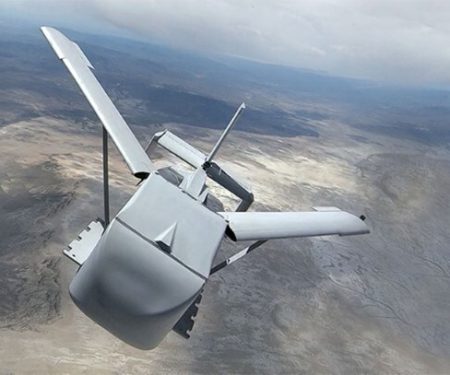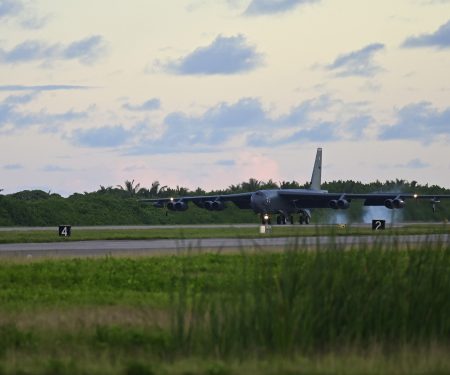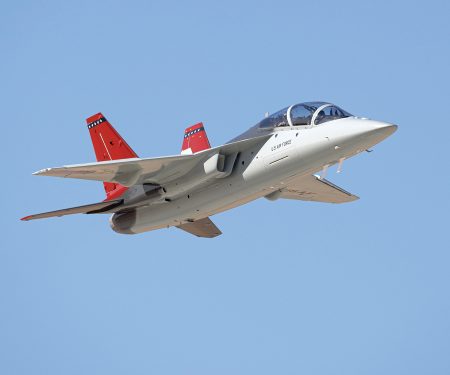B-52 Bombers Join B-2s on Diego Garcia
Air Force Eyes More Uses for AI—with Guardrails
T-7 Making Progress on New Ejection Seat, on Track for November 2027 IOC
What the Supreme Court’s Transgender Ban Really Means
Industry Head: $150B Reconciliation Bill is ‘Sugar High,’ We Need Budget Stability
Radar Sweep
India and Pakistan Face Off but Seek to Contain Fallout
India and Pakistan faced off militarily after a militant attack on tourists that New Delhi blamed on Islamabad, but the nuclear-armed neighbors appeared to be calibrating their responses to avoid full-blown conflict after decades of relative peace.
Vance Says Russia “Asking For Too Much’ in Opening Offer to End War With Ukraine
Vice President JD Vance said May 7 that the Trump administration believes Russia is “asking for too much” in its initial offer on a deal to end its war with Ukraine. During remarks at the Munich Leaders Meeting, the vice president underscored the importance of direct negotiations between Russia and Ukraine, and said that the U.S. is interested in a “long-term settlement” that would bring a stop to the military confrontation launched by Russian President Vladimir Putin three years ago.
Israel Plans to Occupy and Flatten All of Gaza if No Deal by Trump's Trip
Israel has set President Trump's visit to the Middle East next week as a deadline for a new hostage and ceasefire deal, with a massive ground operation to commence if no deal is reached, Israeli officials say.
Boeing Proposes 2027 Delivery Date for New Air Force One Jets, Official Says
Boeing has proposed delivering its delayed new version of Air Force One in 2027, a U.S. Air Force official said on May 7. President Donald Trump negotiated with Boeing for a pair of new 747-8 aircraft during his 2017-2021 first administration. They were initially expected to be delivered in 2024. "We are looking at the requirements that are being potentially traded off to get to that date, and so I would not necessarily guarantee that date, but they're proposing to bring it into '27," Darlene Costello, acting assistant secretary of the Air Force, told the House Armed Services Committee.
More Data, Comms, Countermeasures Needed for Special Ops Aircraft
Special operators are looking to industry for a suite of upgrades to their fixed-wing aircraft, such as radio frequency countermeasures, new methods for aerial refueling and improved networking. At the annual Global SOF Foundation Special Operations Forces Week, Special Operations Command officials who develop aircraft shared these and other updates that are needed from its largest to smallest platforms.
Pentagon Moves to Implement ‘Anything-as-a-Service’ Pilot Program
he Defense Department has identified an initial set of product and service codes that it will target for a new “Anything-as-a-Service” pilot program. Congress directed the establishment of the pilot in the fiscal 2024 National Defense Authorization Act to explore the use of “consumption-based” contracting.
Military Daycares Must Change How They Inform Parents About Reports of Abuse, Watchdog Says
The Inspector General found that DOD policies on suspected child abuse or neglect at CDCs lack “uniform requirements” for each of the services on the types of communication, notification timeframes, what information should be shared, and management of notification files.
‘We Shouldn't Be Burying Our Kids’: Mom of Airman Files New Civil Lawsuit Over Fatal Police Shooting
The mother of a 23-year-old Airman shot and killed in his apartment by a Florida sheriff's deputy last year has filed a federal civil rights lawsuit a year after the incident, alleging that excessive force and other unconstitutional actions led to his death.
Space RCO Head Envisions Orbital Warfare Satellite Product Line
The Space Rapid Capabilities Office (Space RCO) has “about a dozen” programs underway to counter orbital threats—potentially resulting in a “product line” of subsystems that allow the Space Force to rapidly field new spacecraft with greater maneuverability, according to its director.
DOD Working on Recipe to Improve Food on Military Bases
As healthy food gets more attention in national discussions, defense officials are looking at a coordinated attack on the problem of a lack of tasty, nutritious food on military installations.
Trump’s F-15 Basing Decision Adds to Air Force’s Training Troubles
President Donald Trump’s surprise decision to base a squadron of F-15EX fighter jets at Selfridge Air National Guard Base in Michigan will strain the Air Force’s already overburdened F-15 training pipeline—potentially forcing the service to reevaluate its training standards or divert operational aircraft to training roles.
Could Striking First in Cyber Be New Pentagon Policy?
The White House’s pick to lead Pentagon cyber policy wants to lean in on offensive cyber operations and using AI as the cyberattacks become more common and lawmakers worry about conflict with China.
PhantomStrike Low-Cost Lightweight AESA Radar Flies for First Time
Raytheon has begun test flights of its compact PhantomStrike radar, which features an active electronically scanned array (AESA) antenna and gallium nitride (GaN) technology. Most significantly, the manufacturer claims that PhantomStrike, which has already been ordered by Poland, brings all the benefits of an AESA antenna at a much lower price point than other radars in its class. This, combined with its modest dimensions and mass, makes it very suitable for advanced drones, like the U.S. Air Force’s new Collaborative Combat Aircraft (CCA) drones, as well as other platforms.
VIDEO: OA-1K Skyraider II: A Walk-Around Tour with Its Test Pilot
We got an up-close look at L3Harris’ Sky Warden variant of the famed Air Tractor that is serving as the test aircraft for Air Force Special Operation Command’s OA-1K Skyraider II program.






